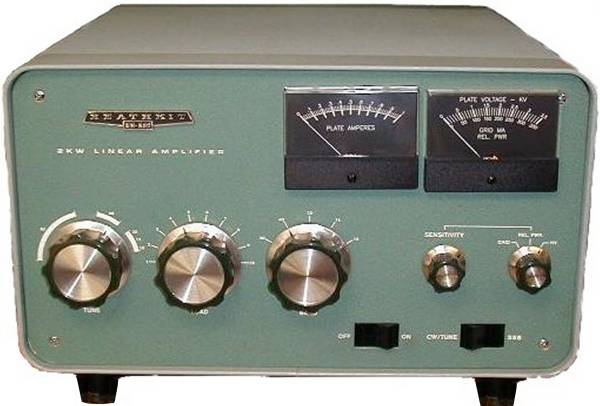The original transformer had developed
a fault because the input fuse expired even when it was disconnected
from its load. It's not that easy diagnosing a fault, when high
power circuits have to be powered up to decide on the reason
for the problem, but a variac helps as this can be used to drop
the mains voltage to safer levels. In this situation the variac
was overloaded as soon as the smallest setting was used and by
judicious measurements I discovered that the primary and secondary
windings fused together at some point. Originally the short was
not present when no power was applied, only developing as the
input voltage was increased, but after several tests the short
went hard.
A new transformer needed to be built as an exact replacement
was not obtainable, and anyway, most if not all American equipments,
although specifying use on 240 volt (or 230 volt) mains, use
transformers better suited for use at 60Hz rather than the UK
standard of 50Hz. This results in a hum, which in the case of
large equipments, can be very objectionable. A new transformer,
correctly specified, would overcome this problem. We chose to
have Majestic Transformers of Poole carry out the work. The old
transformer was used as a pattern for physical size and rating,
and given this size the rated power input was specified as 750
watts at 240 volts. This roughly relates to the Heathkit Amplifier
rating of 2000 watts which is a "PEP" rating, generally
understood to be 2 root2 times the "DC" level, i.e.
2000 divided by 2.8 is 700 watts. From the weight of the original
transformer that rating was thought to be marginal, and probably
only good for intermittent use (probably because it was designed
to run at 60Hz).
The amplifier can be set to a lower power input for CW, or tuning-up,
and the original design uses overwindings on its pair of 115
volt primary windings, as a safer method of switching the high
voltage, i.e. rather than switching 1000 volts they chose to
switch at mains level. This means that a standard power switch
can be used. To cater for this feature the new primary was specified
to have an additional winding of 100 volts. Using the overwinding,
if 240 volts is applied across the whole primary the output voltage
will drop from 1000 to about 700 volts.
Because of the design of the voltage doubler, the secondary winding
must be completely insulated from ground, unlike a transformer
for a microwave oven, which has one of its secondary connections
wired to ground. On test, with the new transformer, the voltage
doubler supplied a DC output, across a bleeder network of eight
series-connected 30 Kohm resistors, of about 2800 volts. This
represents 1000 x 2 x 1.4 volts, or the peak output from the
doubler. The doubler circuit comprises two chains each of seven
diodes and two blocks of four series-connected electrolytic capacitors
having a working potential of about 450 volts each. The original
diodes were in the 1N4000 series, rated at 1000 volts 1 Amp but
on several occasions some of these had failed and when inspected,
all those fitted showed signs of distress, so I fitted two sets
of BY255 diodes, rated at 1300 volts 3 amps. Chris, the owner
tells me that now, under load, the high voltage stays up whereas
before, it used to drop. Probably under normal SSB conditions
the voltage doesn't have time to drop much anyway and the drop
noticed is presumably when tuning up or whistling into the mike. |
